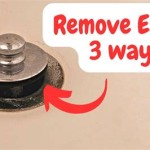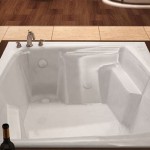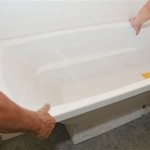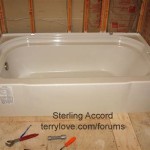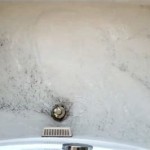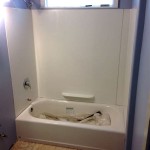Why Is My Bathtub Not Draining Fast?
A slowly draining bathtub is a common household problem that can range from a minor annoyance to a significant plumbing issue. The ability of water to quickly and efficiently exit the tub after bathing or showering is crucial for maintaining a clean and hygienic environment. When the drain slows, it can lead to the accumulation of soap scum, hair, and other debris, fostering bacteria growth and unpleasant odors. Furthermore, a persistent slow drain can be a symptom of a more serious plumbing problem developing within the pipes, potentially leading to costly repairs if left unaddressed. Understanding the potential causes and implementing appropriate solutions is essential for maintaining a functional and hygienic bathroom.
Diagnosing the reason for a slow bathtub drain often requires a process of elimination, starting with the most common and easily resolvable causes. Homeowners can often address these issues themselves with basic tools and a bit of patience. However, if initial attempts fail to improve the drainage, or if there are indications of a more complex plumbing issue, consulting a professional plumber is recommended to avoid further damage and ensure a proper, lasting solution. This article will explore the various reasons why a bathtub might not drain quickly and offer potential solutions for each.
Hair and Soap Scum Accumulation
One of the most frequent culprits behind a slow bathtub drain is the accumulation of hair and soap scum. Hair, especially long strands, tends to bind together and cling to the drain components. Soap scum, a combination of soap, body oils, and hard water minerals, solidifies and adheres to the pipe walls, further constricting the flow of water. This combination creates a sticky, tangled mass that gradually reduces the drain's capacity.
The drain stopper, whether it’s a pop-up, lift-and-turn, or a simple strainer, often acts as the primary collection point for hair and debris. Over time, this accumulation can become significant enough to noticeably impede water flow. Cleaning the drain stopper regularly is a preventative measure that can greatly reduce the likelihood of a slow drain. This involves removing the stopper (following the specific instructions for the type of stopper installed) and manually removing any visible hair or debris. A small brush or bent wire can be helpful for reaching into the drain opening and dislodging stubborn clumps.
Beyond the drain stopper, hair and soap scum can accumulate further down the drainpipe, necessitating more aggressive cleaning methods. A common approach involves using a tool designed specifically for removing drain clogs, such as a drain snake or a barbed plastic tool. These tools are inserted into the drain opening and twisted to catch and pull out the accumulated debris. It is important to exercise caution when using these tools to avoid damaging the drainpipe itself. Gentle, methodical movements are preferred over aggressive force, which can potentially break the pipe or push the clog further down.
Chemical drain cleaners are another option for dissolving hair and soap scum. These products typically contain strong chemicals that break down organic matter. However, it is important to use these products with caution and to follow the manufacturer's instructions carefully. Chemical drain cleaners can be corrosive and can potentially damage pipes, especially older or more fragile plumbing systems. Furthermore, the fumes released by these cleaners can be harmful, so adequate ventilation is essential. As a preventative measure, consider using a strainer over the drain to catch hair and debris before they enter the drainpipe.
Ventilation Problems in the Plumbing System
Proper ventilation is a critical, often overlooked, aspect of a well-functioning plumbing system. Plumbing vents are pipes that extend from the drain lines to the outside of the building, allowing air to enter the system and equalize pressure. This equalization is essential for allowing wastewater to flow freely through the drainpipes. Without proper ventilation, a vacuum can form inside the pipes, hindering the flow of water and causing the bathtub to drain slowly.
Clogged or obstructed plumbing vents are a common cause of ventilation problems. Vents can become blocked by leaves, birds' nests, or other debris, especially if the vent opening is not properly screened. When a vent is blocked, the pressure inside the drainpipes becomes unbalanced, creating suction that resists the flow of water. This can manifest as a gurgling sound coming from the drain as the water struggles to pass through.
Identifying a blocked plumbing vent can be challenging, as the vent pipes are typically located on the roof of the building. Visual inspection of the vent opening is the first step. Using binoculars can be helpful if the vent is difficult to access. If the vent appears to be blocked, removing the obstruction may require climbing onto the roof, which can be dangerous. If you are not comfortable or experienced with working on a roof, it is best to call a professional plumber.
Clearing a blocked vent can sometimes be accomplished using a garden hose to flush out the debris. However, be careful not to force debris further down the vent pipe. If the blockage is more severe, a plumber may need to use specialized tools, such as a drain snake, to remove the obstruction. In some cases, the vent pipe may need to be replaced if it is damaged or corroded. Maintaining proper ventilation is crucial for preventing future drainage problems and ensuring the overall health of the plumbing system.
Partial Blockage Further Down the Drain Line
While hair and soap scum are common culprits near the drain opening, a slow drain can also indicate a partial blockage further down the drain line. This can occur due to a variety of factors, including the accumulation of grease, food particles (especially in kitchen drains that share plumbing with the bathroom), mineral deposits, or even tree root intrusion into the sewer line.
Grease is particularly problematic, as it solidifies as it cools and adheres to the pipe walls, gradually narrowing the drain's diameter. Food particles can also contribute to blockages, especially if they are not properly disposed of. Mineral deposits, common in areas with hard water, can build up over time and restrict the flow of water. In older homes, tree roots can sometimes infiltrate the sewer line through cracks or weak points, causing significant blockages.
Identifying a partial blockage further down the drain line can be more challenging than addressing a clog near the drain opening. Symptoms may include slow drainage in multiple fixtures, such as the bathtub, sink, and toilet. Gurgling sounds coming from the drains can also be an indicator. A plunger can sometimes be effective in dislodging a partial blockage, especially if it is located relatively close to the drain opening. However, if the blockage is further down the line, more specialized tools and techniques may be required.
A drain snake, also known as an auger, is a flexible tool that can be used to reach further into the drain line and break up or remove clogs. Different types of drain snakes are available, ranging from small hand-cranked versions to larger, motorized models. When using a drain snake, it is important to insert it carefully and to avoid forcing it, as this can damage the pipes. Rotate the snake as you push it into the drain, and pull it back slowly to remove any debris that it has collected.
Hydro jetting is a more powerful method for clearing drain blockages. This involves using a high-pressure stream of water to blast away grease, mineral deposits, and other debris from the pipe walls. Hydro jetting is typically performed by professional plumbers, as it requires specialized equipment and expertise. While effective, hydro jetting can also be potentially damaging to older or more fragile pipes, so it is important to have a plumber assess the condition of the pipes before using this method.
In cases where tree roots are suspected, a plumber may need to use a video camera to inspect the sewer line and identify the location and extent of the root intrusion. Depending on the severity of the problem, the roots may need to be cut away using specialized root-cutting equipment. In some cases, the damaged sewer line may need to be repaired or replaced. Regular maintenance and preventative measures, such as avoiding pouring grease down the drain and using drain strainers, can help to prevent partial blockages further down the drain line.
Defective or Improperly Installed Plumbing
In some instances, a slow bathtub drain may be the result of a defect in the plumbing system itself, or an improper installation. This is particularly common in older homes where the plumbing may have deteriorated over time, or in newer homes where the plumbing was not installed correctly in the first place.
One potential issue is a collapsed or damaged drainpipe. Over time, pipes can corrode, crack, or even collapse, restricting the flow of water. This is more common in older homes with cast iron or galvanized steel pipes, which are susceptible to rust and corrosion. A collapsed or damaged pipe will typically require replacement, which can be a significant plumbing project.
Another potential issue is improper pipe slope. Drainpipes are designed to have a slight downward slope to allow gravity to carry wastewater away from the fixture. If the slope is too shallow, or if there are sections of the pipe that slope upwards, water can pool and accumulate, leading to slow drainage and blockages. Correcting improper pipe slope typically requires re-piping the affected section of the drain line.
The size of the drainpipe can also be a factor. If the drainpipe is too small for the fixture, it may not be able to handle the volume of water being discharged. This can result in slow drainage, especially when the bathtub is being emptied quickly. Upgrading to a larger drainpipe may be necessary to resolve this issue.
Improperly installed drain traps can also contribute to slow drainage. A drain trap is a U-shaped section of pipe that is designed to hold a small amount of water, which prevents sewer gases from entering the home. If the trap is installed incorrectly, or if it is damaged, it can impede the flow of water. Ensuring the drain trap is properly installed and functioning correctly is essential for both drainage and preventing unpleasant odors.
Diagnosing plumbing defects and improper installations often requires the expertise of a professional plumber. Plumbers have the tools and knowledge to inspect the plumbing system, identify any underlying problems, and recommend appropriate solutions. In some cases, repairs may be relatively simple, such as replacing a section of damaged pipe. In other cases, more extensive re-piping may be necessary. Addressing plumbing defects and improper installations is crucial for ensuring proper drainage and preventing future problems.

5 Easy Ways To Unclog Bathtub Drain

Bathtub Won T Drain Quick Solutions To A Common Problem

How To Easily Unclog Bathtub Shower Drain In 5 Minutes Jonny Diy

6 Reasons Why Your Bathtub Doesn T Hold Water Marco Plumbing Durham Greater Toronto

Why Is My Bathtub Not Draining Causes Fixes Checkatrade

How To Unclog Your Bathtub Drain In 5 Minutes

Unclog A Bathtub Drain With Standing Water Tub Won T

3 Simple Ways To Unclog A Bathtub Drain Naturally Wikihow

Bathtub Won T Drain Quick Solutions To A Common Problem

How To Unclog Bathtub Drain Pipes Save 200 In Two Minutes
Related Posts

